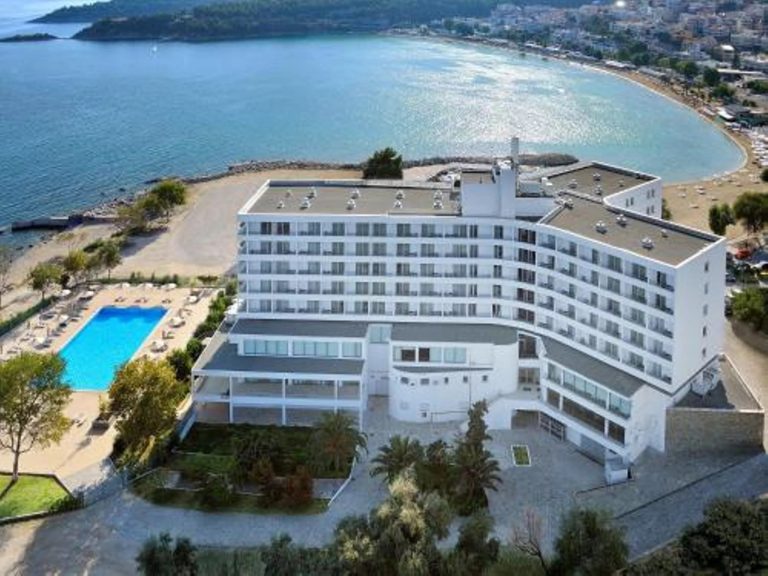The Kras
The Kras consists of a limestone plateau with numerous dry valleys, potholes, and karst caves, stretching between the Vipava Valley and the Gulf of Trieste. Here we can follow the underground stream of the Reka River flowing through the magnificent Škocjan caves system ( Škocjanske Jame ).
We also come across the Reka river over 200 m underground in the Kačna cave ( Kačnajama ) near Divača. After that, the Reka River disappears in the mysterious underground and resurfaces again as the Timav in the Gulf of Trieste. Two other well-known caves are Vilenica near Lokve and a more demanding Lipica cave ( Lipiška Jama ) between Sežana and Lipica.
The famous Lipizzaners, white horses of the Spanish riding school at the Vienna court, originate in the stud house in green Lipica. In the barren karst soil also grows the vine that gives the famous ruby-red wine, known around the world named Teran.
Sežana
The town was built by the road and the railroad to Trieste. It only started to progress after WW II. Border crossing with Italy, Femetiči ( Fumetto ), is only one kilometer from the town center.
One of the roads leads through the Senadal valley to Divaca and Senožeče; the former is an important railway crossroads ( lines Ljubljana – Koper, and Trieste – Ptulj ).
A wide road leads from Sežana to the land of Teran. The old Kras village of Tomaj sits on a hill with a gorgeous view of the picturesque surroundings. Vineyards and small oak forests spread all around it on brown-red karst soil. Not far away is the village of Dutovlje. Above the Branik Valley, on Turn ( 363 m ) sits an ancient walled village of Štanjel dating from the Middle Ages. On the top of the hill are ruins of the old defense tower from the 12th century and under it, in the clustered settlement around it, the 16th-century castle of the Counts of Gorizia.
South of Sežana lies Lipica. The stud farm was established by the Vienna court in 1580. Lipizzaners were bred from local and Spanish breeds. The stud farm ( kobilarna ) lies in a green oasis in the middle of barren karst. It is surrounded by a forest of centennial oak trees. Only a kilometer away lies the Lipica border crossing with Italy.
Kozina
The Materija valley ( Matarsko podolje ) stretches between the Brkini Hills and the Čičarija Range further down from Slavik ( 1028 m ), the last peak in Primorska that rises above 1000 m. The Podgorski Kras plateau under Slavnik gradually descends to Istria. Numerous streams flowing from the Brkini slopes disappear underground when they meet with karst soil. At the edge of the karst plateau, each stream has cut a blind valley surrounded by rocky cliffs from three sides. The area abounds in pits and caves The most famous cave system is Dimnice near Markovščina which is also open to tourists.
The road linking Rijeka and Trieste through the Materija valley was already very important in Roman times. From Hrpelje pri Kozini leads a forest road to the top of Slavnik.
A road leads from Dobrovo to the Čičarija range, most of which lies in Croatia. Golac is the only Slovene village in the Čičarija range.
Podgorski Kras descends with crags and scraps into the Rižana valley. On the edge of the plateau above Trieste, right next to the border with Italy, is the Socerb fortress with a beautiful view of Trieste and its surroundings.
The karst villages of Tomaj and Dutovlje are the home of kraški Teran, a noble wine marked by the red karst soil and dry climate. Here wine cellars and good local inns are linked by a wine road.
The tradition of breeding noble white Lipizzaners goes back over 400 years. The large grounds of the Lipica stud farm a, surrounded by oak groves.
In those parts, old collapsing karst houses are actually hard to come across nowadays. People became aware of the values of traditional architecture and the number of houses with fenced yards rebuilt in traditional style increases.
Štanjel looks down on the karst landscape from the top of a hill. It is a true medieval town with a castle and mighty town walls. Houses are old and built of stone. Some of them are still lived in and some have been demolished or there are only stone walls jutting out. Despite that, a walk through this ancient town is worth a couple of hours of your precious time.
